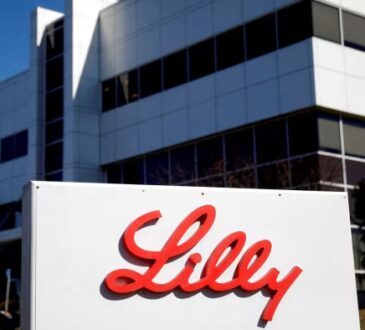LOS ANGELES, CALIFORNIA – JANUARY 8: Flames from the Palisades Fire burn a building on Sunset … More
For rental property owners who lose property to a natural disaster, insurance proceeds can trigger a taxable event, leading to upward of 30% owed in capital gains taxes. Those who lost property in recent disasters, including Hurricane Helene and the Los Angeles wildfires, are experiencing this firsthand but there are unique solutions for disaster recovery.
Analysts and catastrophe modelers, such as Milliman and CoreLogic, have estimated insured losses ranging from $4 billion to $6 billion because of Helene and $25 billion to $45 billion because of the Los Angeles wildfires in early January.
If a destroyed property is fully depreciated, the insurance payout could trigger a huge tax bill. Imagine losing your livelihood, receiving a fraction of the property’s worth, and then realizing you owe taxes on the insurance.
Luckily, a little-known IRS rule known as the 1033 exchange allows those who have lost rental property to natural disasters to defer capital gains and put the funds back to work in another property or professionally managed real estate portfolios.
I Lost My Property. Now What?
When a natural disaster destroys a property, the owner may receive an insurance payout. The IRS treats the insurance payment as a sale of the property. If the payment exceeds the property’s adjusted cost basis from depreciation, it creates a capital gain.
A 1033 exchange allows property owners to defer those capital gains taxes if the insurance proceeds are reinvested in a similar property or real estate portfolio. In addition to property loss due to natural disaster, owners can use the 1033 exchange for property lost due to condemnation or seizure by eminent domain.
ALTADENA, CALIFORNIA – FEBRUARY 05: An aerial view shows homes burned in the Eaton Fire on February … More
How Do I Qualify For A 1033 Exchange During Disaster Recovery?
The tax deferral requirements for a 1033 exchange are much more relaxed than those for a typical 1031 exchange.
Long Reinvestment Timeline
The 1033 exchange allows two years from the end of the tax year of the realized gain to acquire a replacement property. This timeline increases to three years for condemned property.
Broad ‘Like-Kind’ Replacement Definition
A lost property must be replaced with another of “like-kind.” What the IRS considers “like-kind” is broad (and generous). For example, suppose a hurricane destroys a single-family rental home. In that case, the owner may complete a 1033 exchange into an appropriately structured portfolio of managed properties.
Disaster Recovery Cash Access Allowed
An investor may use a 1033 to reinvest into a leveraged investment property and access the leveraged portion as cash without triggering a taxable event. For example, someone who receives a $1 million insurance settlement could buy a $1 million replacement property by putting only $500,000 down. The person would obtain a loan for the remaining amount and keep $500,000 in cash from the transaction. This flexibility is particularly valuable in disaster scenarios, when immediate access to cash can help stabilize finances.
Done With The Hassle Of Property Management?
Warren Thomas, a founder and managing partner of ExchangeRight Real Estate, was evacuated minutes before a wildfire consumed his neighborhood, damaging his home and more than 9,000 buildings throughout Altadena and Pasadena, California.
“Of the various replacement options for property damaged in the fires, Delaware Statutory Trust investments may offer a great solution for 1033 exchange investors seeking passive ownership, stable income, diversification, and tax deferral,” Thomas shared. It’s good that ExchangeRight specializes in DSTs and manages over $6 billion in real estate assets.
SAN FRANCISCO, CALIFORNIA – APRIL 16: Real estate agents leave a home for sale during a broker open … More
A Delaware Statutory Trust (DST) may be the best “like-kind” replacement option for owners who want to escape the burden of property management. A DST allows multiple investors to co-own fractional interests in commercial real estate portfolios. A DST portfolio may include apartment buildings, retail buildings, self-storage, student housing, office complexes, or industrial warehouses.
A DST’s simplicity and established portfolio eliminate the time-consuming process of searching for, negotiating, and closing on a new property.
Certain DSTs may have low minimum investment requirements, sometimes as low as $100,000, making them an accessible and attractive option for smaller insurance payouts.
Thomas explained, “DST sponsors can purchase and manage commercial property portfolios on behalf of investors who reinvest insurance proceeds into the DST, potentially providing cash flow, exit optionality, and estate tax advantages. DSTs may be a good replacement option for 1033 investors who don’t require short-term liquidity and would like to retain a cash safety net.”
Those are important considerations. DSTs are illiquid investments, typically subject to 5-to-10-year holds. And like using a 1033 to invest directly in a leveraged property to keep some cash out of the transaction, DST investors can invest a portion of their insurance proceeds and combine it with leverage to defer all of their taxable gains. Be sure to work with a qualified advisor familiar with 1033 exchanges and DST rules and regulations in order to maximize your disaster recovery.
Securities are offered through Arkadios Capital. Member FINRA/SIPC. Advisory services are offered through Creative Capital Wealth Management Group. Creative Capital Wealth Management Group and Arkadios are not affiliated through any ownership. This material was created for educational and informational purposes only and is not intended as tax, legal or investment advice.





